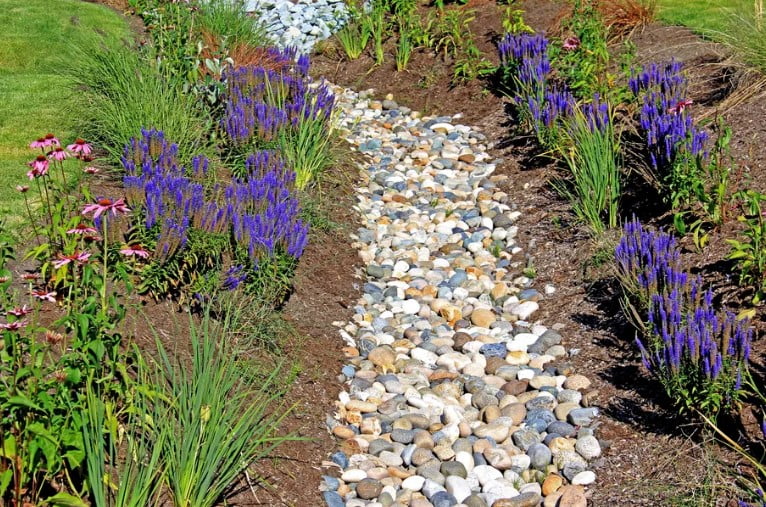How to Install a French Drain
If you are having drainage issues, you may need to install a French drain. Indeed, drainage problems are not only aesthetically unpleasing, but they cause wood rot and mold. Nevertheless, a French drain can solve your problems.
What is a French Drain?
Despite its name, the invention of the French drain system does not originate in Europe. In fact, it was founded by a man from New England, Henry French. In 1859, he explained in a farm drainage book of a new way to make a drainage system. At first, he named it the called a cellar drain, but it is now called a French drain.
To explain, a French drain gets rid of surface water and groundwater through the use of a gravel-filled trench and perforated drainage pipes. As water in the trench rises, the water enters the pipe through the perforations and drains out of the area.
Due to French drains being filled and covered with gravel and soil, the area over it remains usable. So, a French drain is practical and will not look unsightly in your yard.
Benefits of a French Drain
Along with the benefits above, there are many upsides to installing a French drain.
For one, French drain installations are simple. In fact, they can be put in when a house is being constructed due to their speed and efficiency. However, they can be added to houses later.
Plus, they require little to no maintenance. French drains are put in under the ground and are protected in a layer of fabric, so they do not break easy. Also, since they are supposed to be perforated, some holes that develop can be better of the French drain.
How to Know When to Install a French Drain
Despite its foreseeable benefits, you may not need to install French drain. However, if you have the following issues, you might want to think about installing one.
- An area where an open ditch isn’t practical or safe
- Water threatens the integrity of a retaining wall during and after heavy rains
- Water is flowing toward a low-lying building, like a barn or shed
- Water must be redirected away from the house foundation
- Water is pooling in an area you want to keep dry, like a play area or garden
Hire a Pro, or DIY?
While this is a task that can be done by yourself, you might want to think about hiring a pro. In fact, there are a few reasons where hiring a pro would be better than doing it on your own.
If you are installing a long drain or digging through rocky soil, hiring a pro would be better. When dealing with rocky soil, you risk damaging the pipe if not installed well.
Also, you need to mark utility lines before you start to install a French drain. If you want to do this on your own, call 811 to have your land marked. Otherwise, a professional could do this for you.
In general, a pro will be able to finish an install quicker and with less mistakes. However, it is a task that can be done by yourself. Remember, it is a labor-intensive task, especially digging the trench. So, make sure you have enough time and energy to complete it on your own.
Materials Needed
If you want to install a French drain on your own, these are some things you might need.
- shovel
- striping spray paint
- top soil
- sand
- 6′ drain pipe (or more, if needed)
- roll of landscape fabric
- gravel
- turf
- landscaping stones
How to Properly Install a French Drain
First, plan where you want to place your drain. To work, the drain must run from a higher to lower location. Also, don’t want the drain to run into a neighbor’s property.
Next, you need to dig out your foundational trench. Most likely, this step will take you the most time. Remember, you have to be sure you are not hitting any pipes. Call 811 for more info.
Third, lay down a filter fabric liner at the bottom of the trench. Be sure to leave 10 inches of fabric on either side of the trench.
Fourth, lay down the perforated pipe onto the fabric in the trench. Notably, you want to leave about five inches between the top gravel and the ground surface.
Fifth, fold the excess fabric over the gravel. In turn, this should create an overlap. Ultimately, this helps protect the pipe.
Lastly, fill the trench with sand, then with topsoil. Remember, you want to be covering the pipe so it looks better in your yard, so cover it all the way.
Also, you can cover this with turf and add a bed of stones around the opening of the drainpipe. This gives the drain a water permeable exit. After all this, you should have a working French drain!
Install a French Drain
Overall, trying to install a French drain can be an easy task. While digging the trench can be hard work, it is a great way to improve drainage in your house.
If you need help installing a French drain, call Titan Construction to get a free quote.



